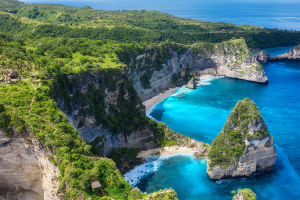Grand Teton National Park is one of the most famous and stunning nature reserves in the United States. This magnificent park is world-renowned for its breathtaking scenery, diverse wildlife, and significant historical and geological features.
Located in the spectacular glacier mountains of northwestern Wyoming, USA, Grand Teton National Park covers an area of 1,256 square kilometers.
Established in 1929, the park was created to preserve the natural environment of the area and protect it from the devastating effects of mining activities that had caused serious damage to the local environment and ecology.
Today, Grand Teton National Park attracts millions of visitors each year who come to witness the park's unique natural beauty and experience its unparalleled wildlife encounters.
The towering mountaintops of Grand Teton National Park are covered with thousands of years of glaciers, making it seem like a fairyland on earth. The park's main feature is its massive rock pillars, which reach over 4,000 feet and are among the tallest in the world.
These rock pillars were formed millions of years ago by sediments from the sea floor and the movement of the Earth's crust. These rock pillars are not only a natural wonder but also a testimony to the earth's history. In addition to rock pillars, the park also boasts magnificent canyons and alpine lakes.
One of the most famous attractions in the park is the "Angel's Ladder", a 21-mile road that winds its way through canyons, with many viewpoints along the way for stunning views. There are also a series of glaciers and lakes formed by glaciers in Grand Teton Park.
Seven lakes are distributed at the foot of the mountain, and there are hundreds of alpine lakes in the mountains. The water of the lake mainly comes from the streams of the Teton Mountains and the snow in winter.
The largest natural lake in the park is Jackson Lake, which is approximately 26 kilometers long and has a depth of 130 meters.
What sets it apart from other lakes in the park is that its main source of water is the river that feeds the streams in the southern part of Yellowstone National Park. Therefore, Lake Jackson is very important for agricultural irrigation in the states to the west.
Grand Teton National Park is also a paradise for wildlife, with more than 70 species of mammals, more than 250 species of birds and more than 1,000 species of plants. Among the most popular animals are bears, elk, and goats.
In the park, visitors can observe the life and behavior of these animals up close by participating in wildlife observation activities. It is very important to protect the environment and ecosystem of Grand Teton National Park.
The extreme weather and climate conditions in this region require a range of measures to protect wildlife and other ecosystems. The park management regularly conducts activities such as wildlife census, land conservation, and wildlife medical treatment to ensure that the ecosystem in this area is maintained and protected.
Grand Teton National Park is widely recognized as one of the most beautiful national parks in the world. Its alpine glacial lakes are comparable to those found in Banff National Park in Canada. The park's stunning natural beauty and the diversity of its wildlife have inspired generations of visitors from around the world.
When you visit Grand Teton National Park, you will feel like you are living in a movie, surrounded by stunning landscapes, fascinating wildlife, and breathtaking vistas. Whether you are an avid hiker, nature lover, or simply seeking a peaceful retreat from the hustle and bustle of everyday life, Grand Teton National Park is the perfect destination.


